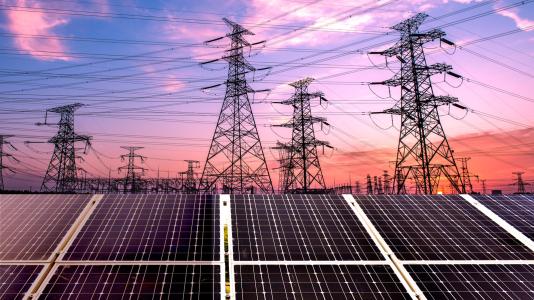
By: Karthikeyan Balasubramaniam, Siby Plathottam, Sang-il Yim, Kumarsinh Jhala, and Shijia Zhao
If there is a cloud casting shade on the rise of renewable energy initiatives such as rooftop solar, it is the unclear impact these distributed energy resources (DERs) have on bulk power system reliability.
DERs don’t just add to a system’s capacity, they also present challenges. Their impact, good and bad, varies according to their age, size, and the prevailing standards and technology that were in place at the time of their development and installation. This makes it hard for power system operators to gauge the true impact of DERs and make reliable forecasts about their effect, especially during extreme conditions.
The U.S. Department of Energy’s (DOE) Office of Electricity Advanced Grid Modeling (AGM) and Microgrid Research and Development programs have funded research that will help make it easier for power system operators and major regulatory bodies to understand the impact of DERs. Specifically, the program funded work on a transmission and distribution system co-simulation software (TDcoSim) with high fidelity models that will allow for modeling of tens of thousands of DERs as individual units instead of as aggregated units.
The advanced software recognizes that not all DERs are created equal. Each one contributes to the overall electricity generation according to specific parameters, advances, and limitations. Accounting for these differences creates a clearer picture of how, where, and why the electrical power system can be improved.
For example, the North American Electric Reliability Corporation (NERC) would like to study in detail the interactions of DERs with the bulk power system, as well as identify deficiencies and make planning changes as appropriate. The cutting edge TDcoSim software, developed at DOE’s Argonne National Laboratory, offers the potential to do so. It may also reveal the potential for improvements to the existing models themselves. NERC is working with Argonne through the System Planning Impacts from Distributed Energy Resources Working Group (SPIDERWG) to use TDcoSim to quantify the impact of DER installations, accounting simultaneously for their impact across transmission and distribution systems. The software will highlight ways in which DERs contribute in these areas, which will lead to more informed decision-making.
The findings of a report on this initiative will be released as a NERC technical report in late 2022.
Learn more information on Argonne National Laboratory’s contributions to the DOE Office of Electricity Advanced Grid Modeling Program at: https://www.anl.gov/aet/advanced-grid-modeling